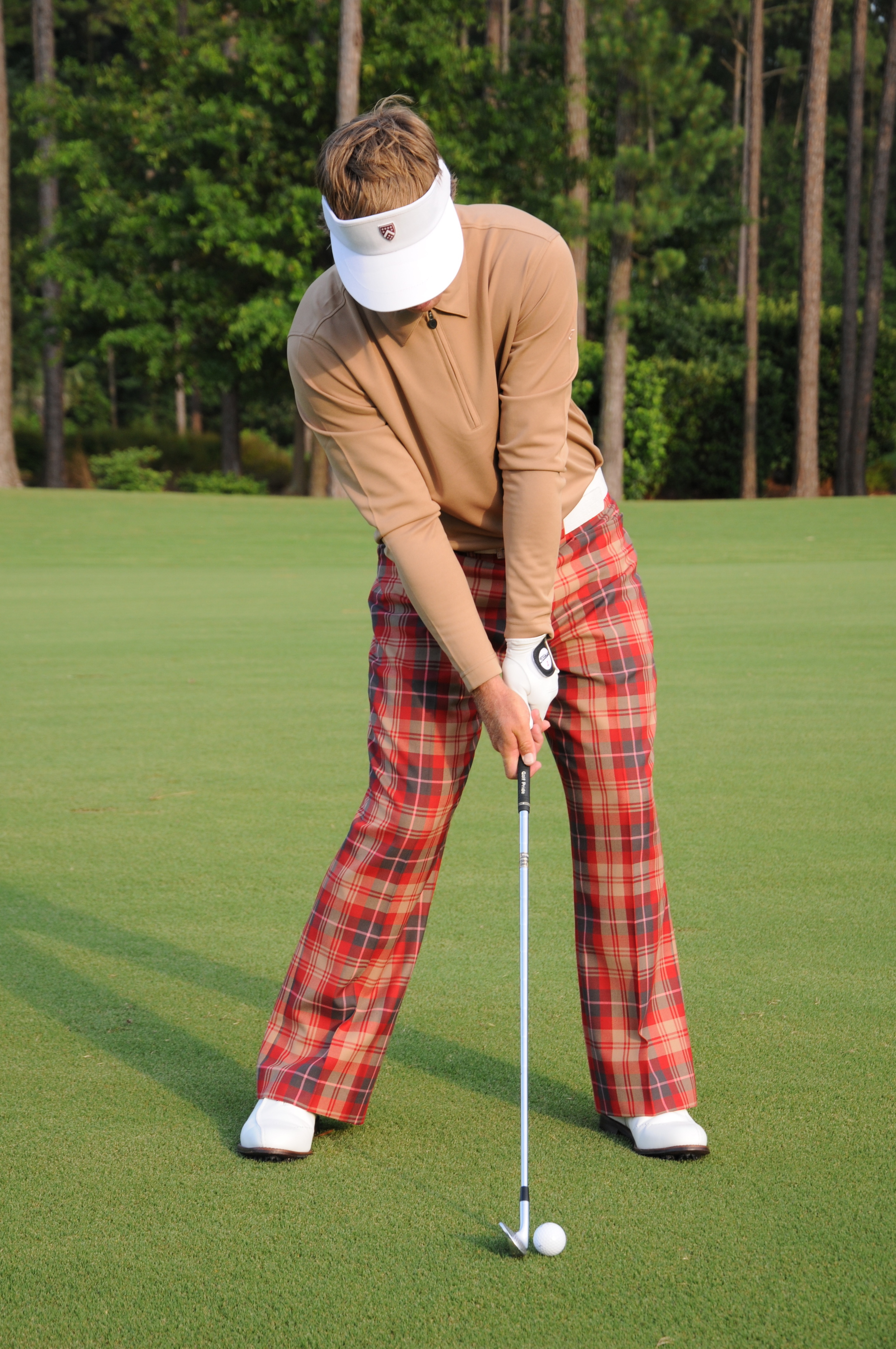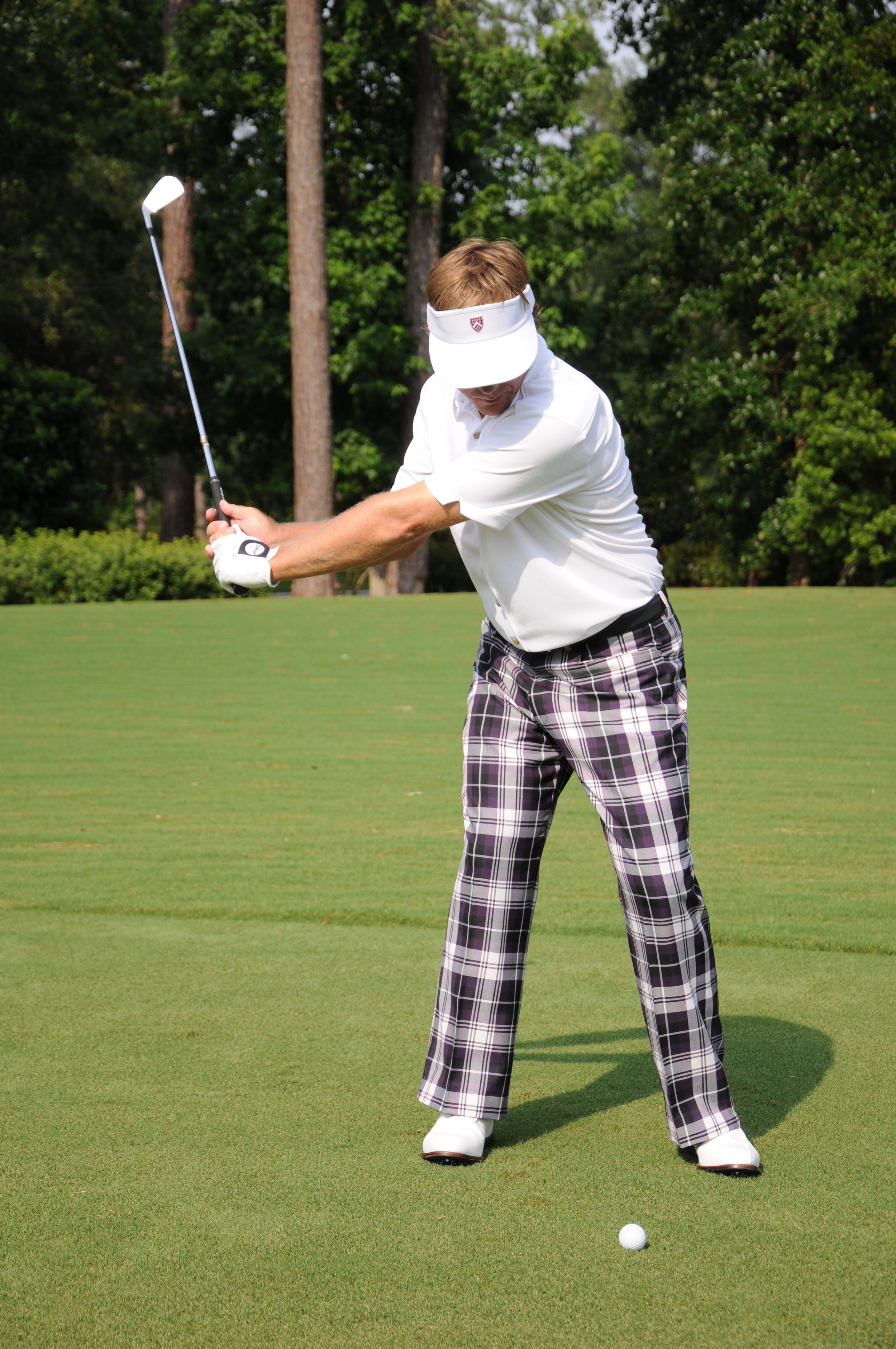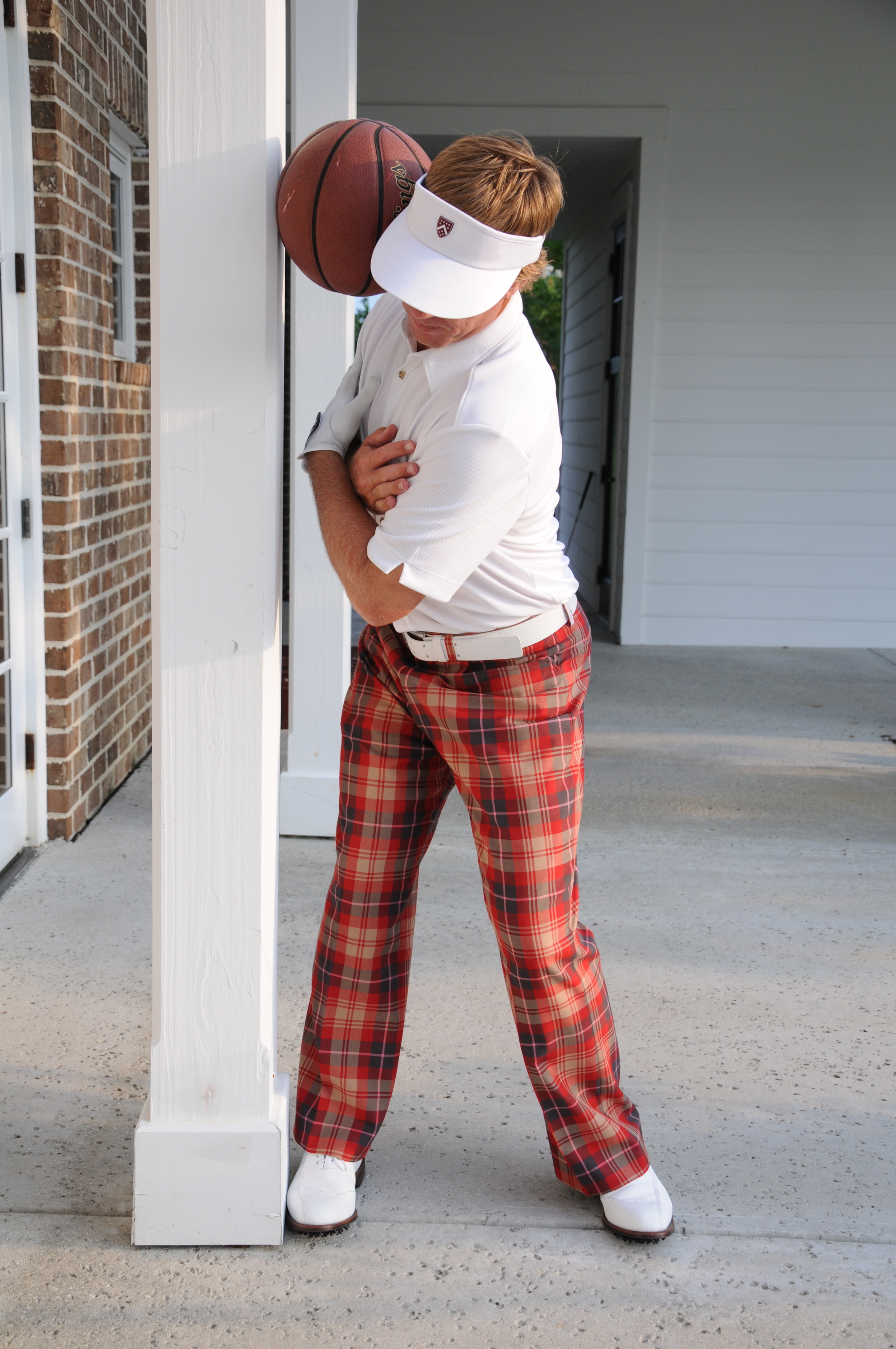Stop the Scoop
/Are you tired of putting everything you have into your game, only to see the ball literally limp off the club face after each swing? There’s just no return on the energy you’re putting in. Today I’m going to show you how to get the sizzle back into your ball striking. Watch this video first…
I often ask my students which club imparts the most energy into the ball relative to club speed. The answer? Putter. Why? It has the least loft at impact and delivers the least oblique strike to the ball. Learn to reduce the loft coming into impact in order to start compressing the ball off the club face.
Get the club face in place early in the downswing. This is done by bowing/flexing the lead wrist which in turn will de-loft and strengthen the club face by the time impact occurs.
Try the Preset Club Face Drill. Using a 7 iron, take the club back so that the shaft is parallel to the ground making sure the lead wrist and leading edge are tilted down towards the ground slightly. Wind the arms back 1 foot and rotate through, working to maintain the face and wrist angles. The ball flight should be low and penetrating with a slight draw.
Make sure that the low point of the swing arc is forward of where impact occurs. This can be rehearsed by making two practice swings between each shot you hit on the range where the sole of the club bottoms out well in front of where it was resting on the ground. The handle and weight must be forward at impact in order for this to occur.
If you’re a scooper you owe it to yourself to give these ideas a try. My 30 years of teaching golf say that they truly do work and with a little patience and persistence you’ll significantly improve the quality of your ball striking.
Remember - there is no magic, only hard work and a good solid plan. Get to it!



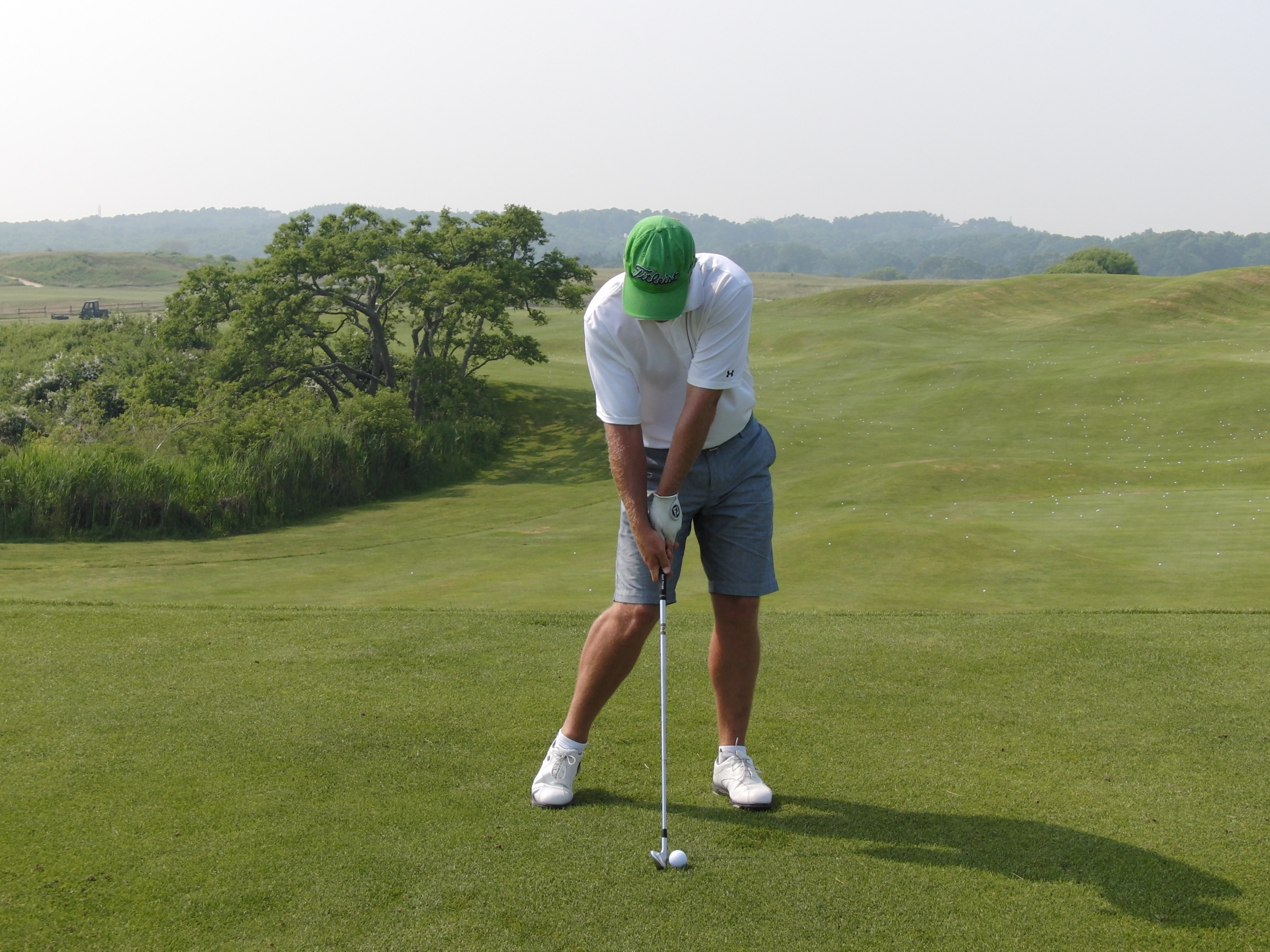
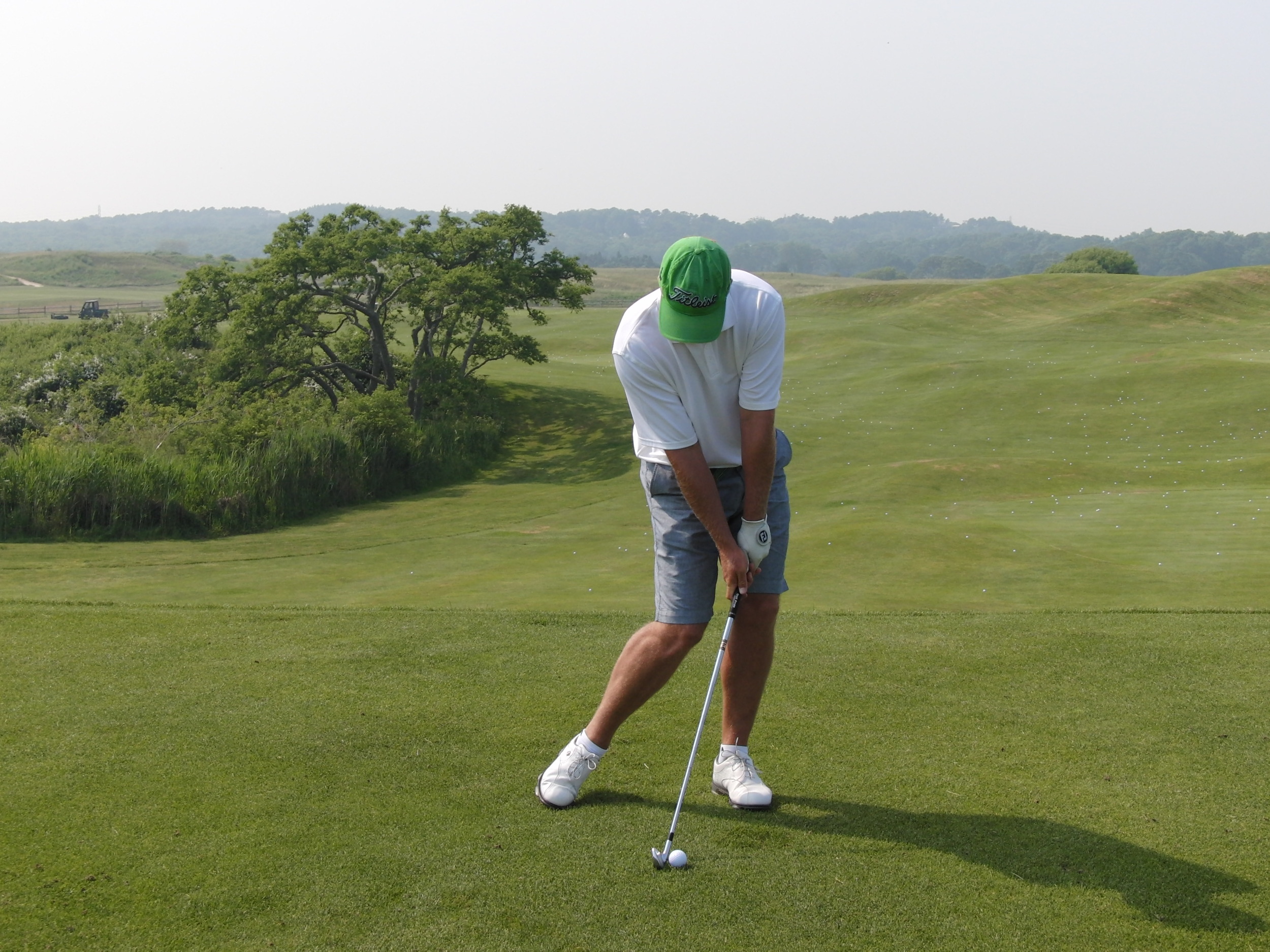
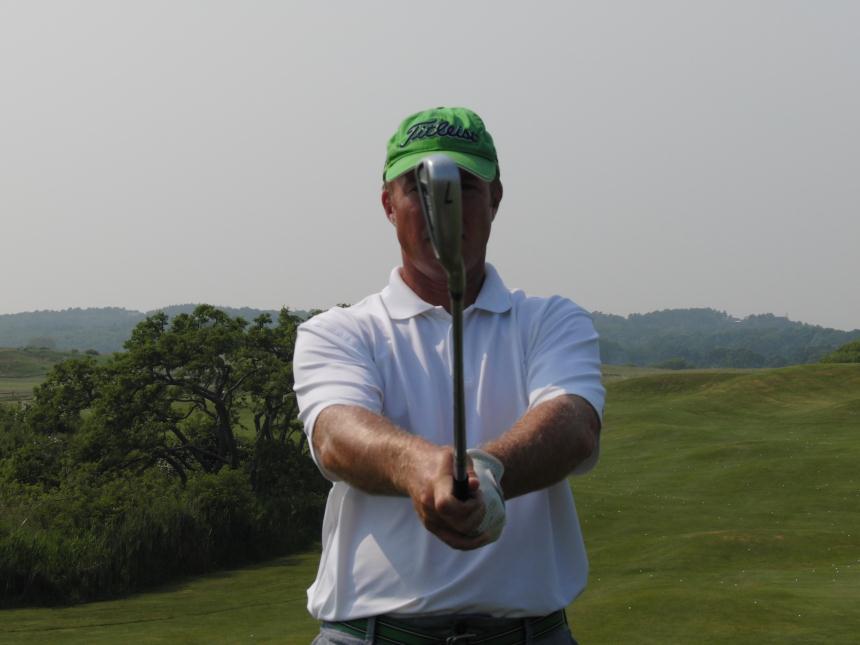

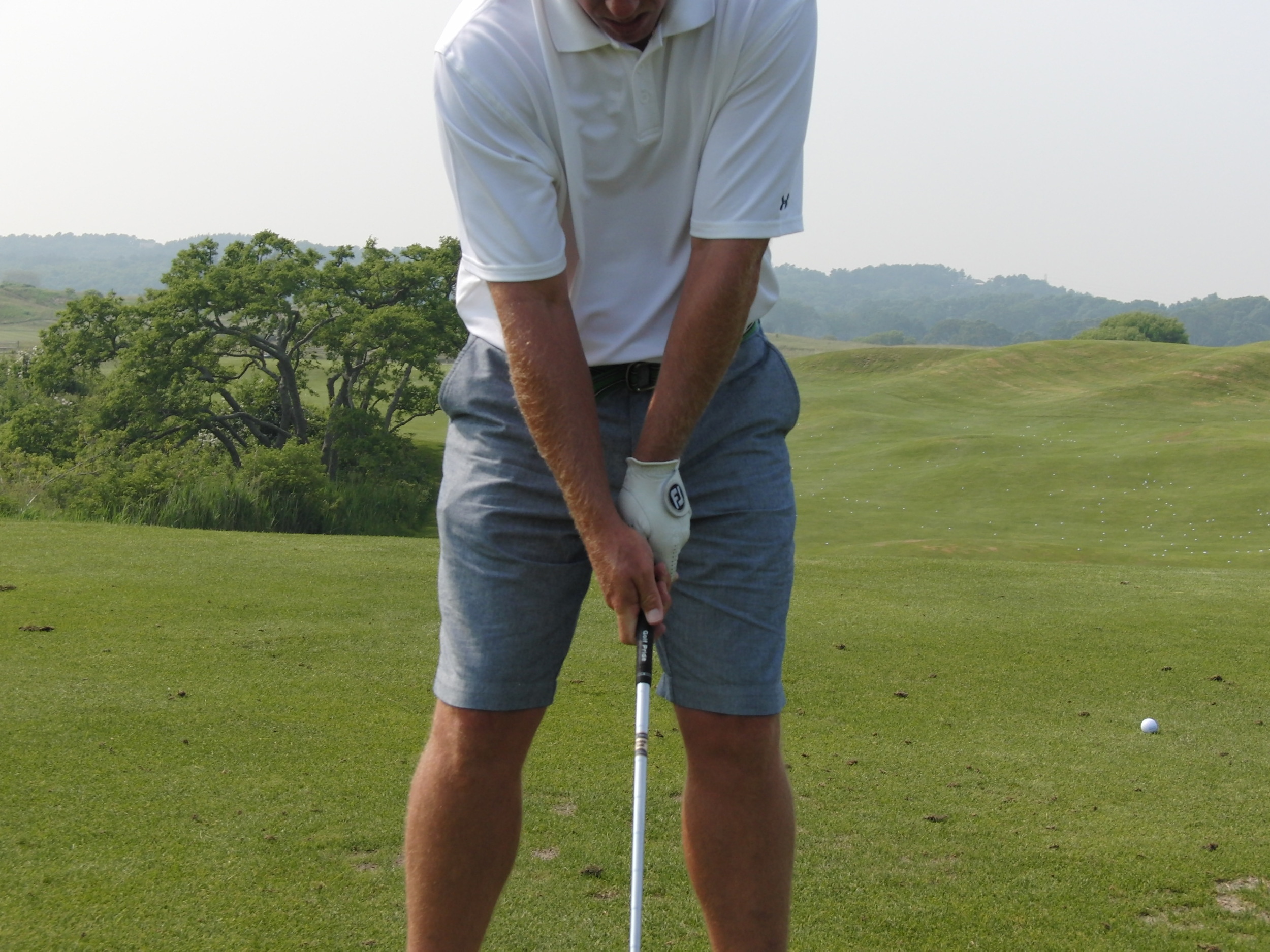
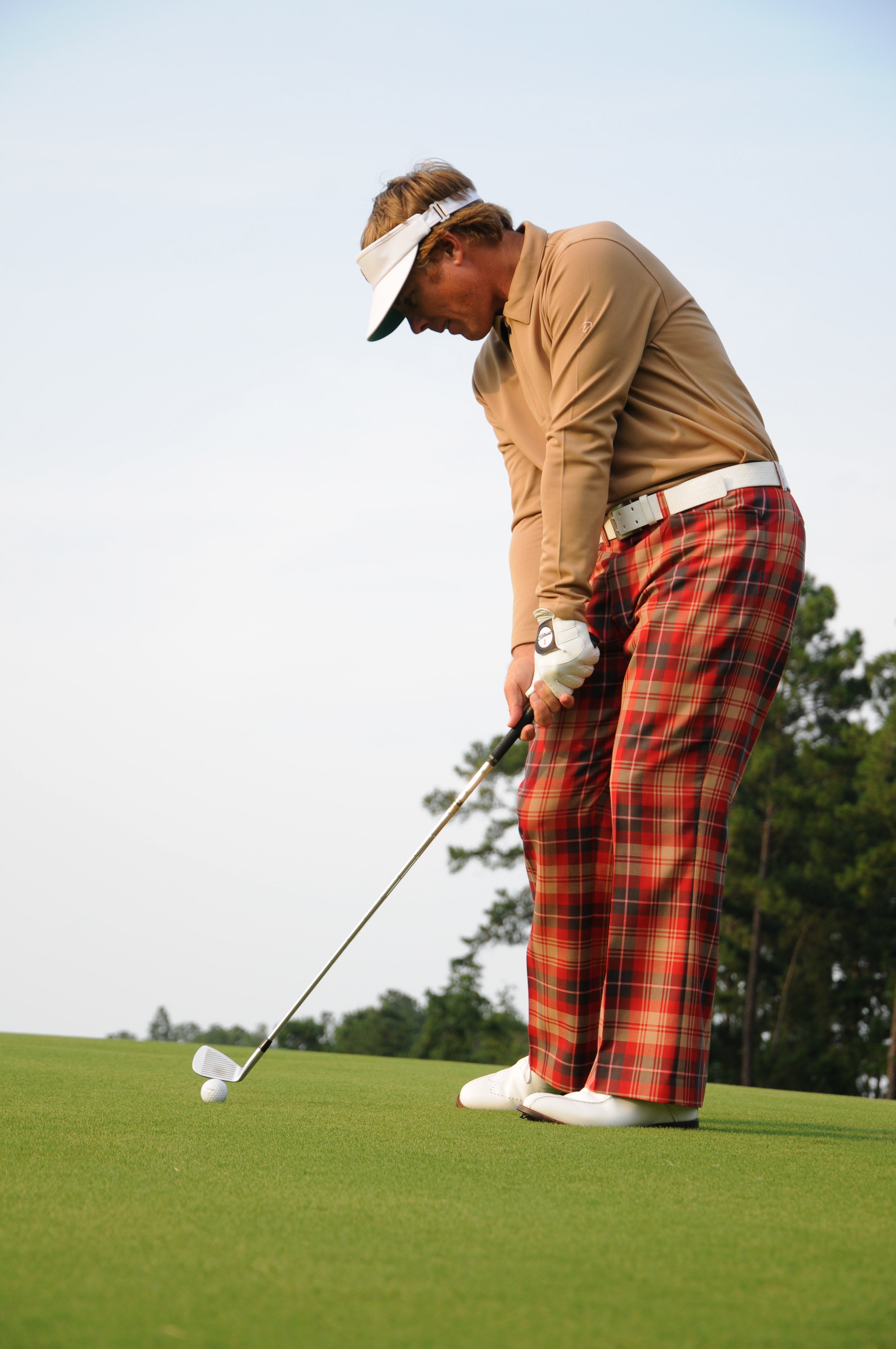
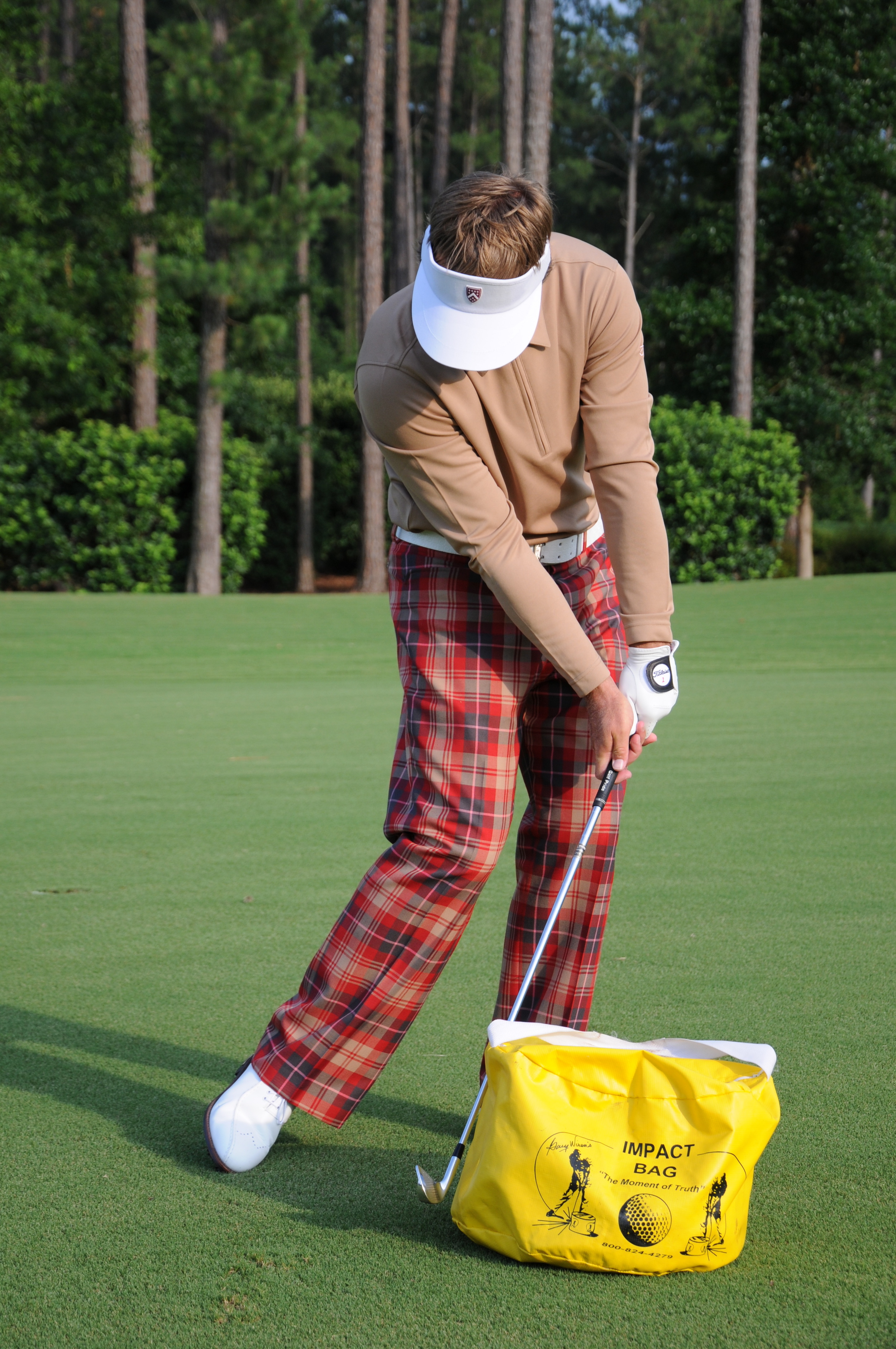
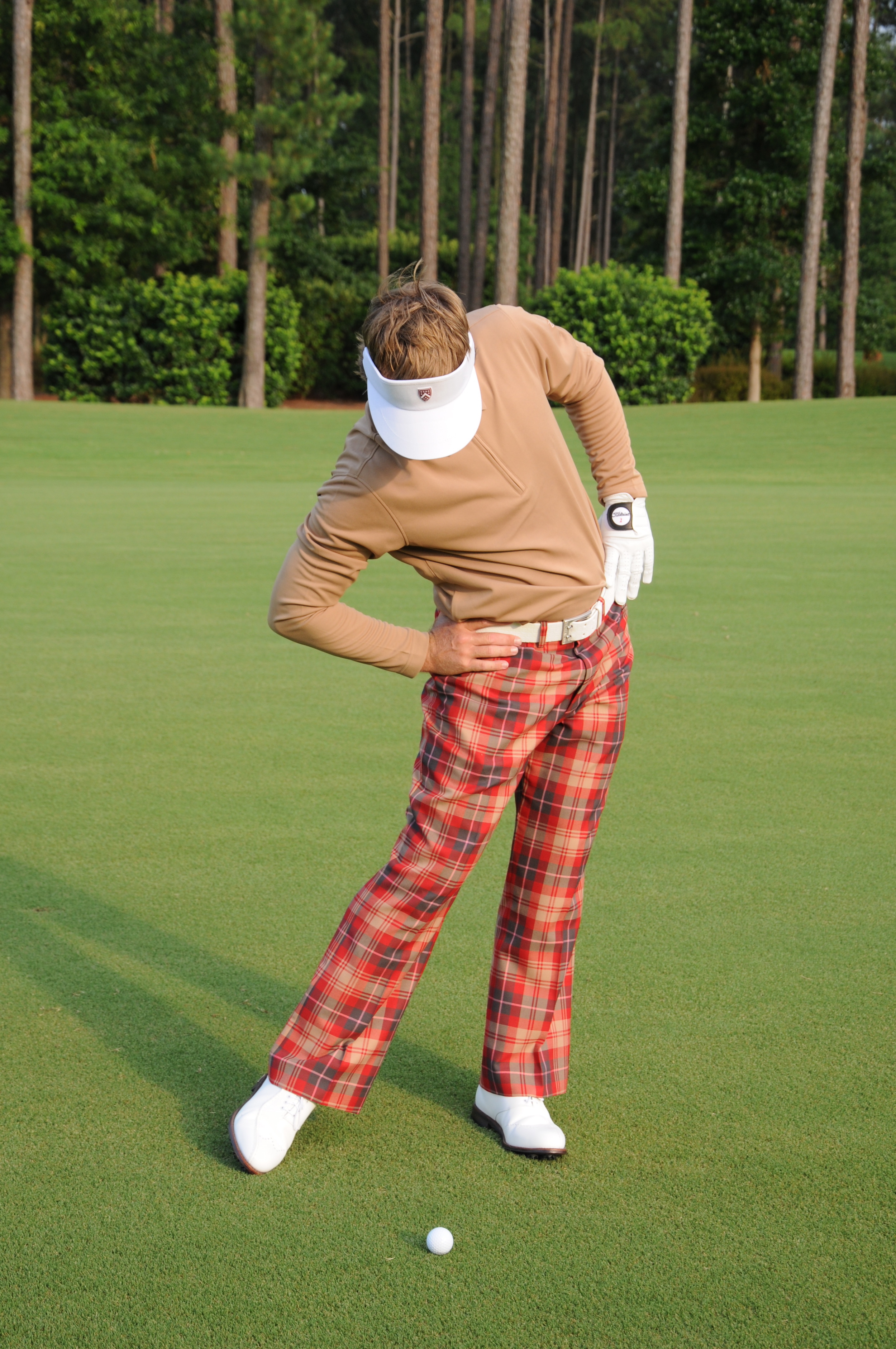
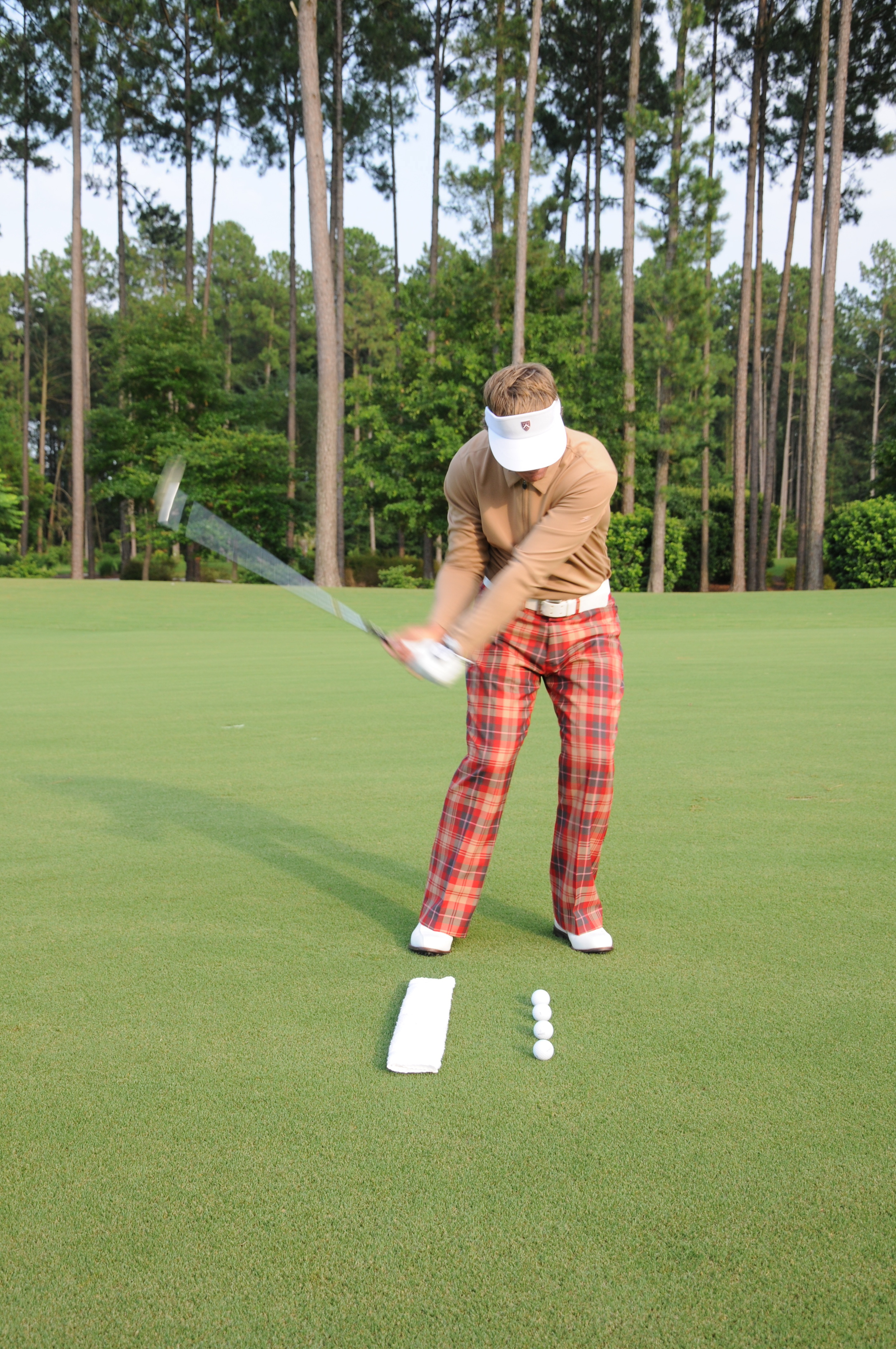
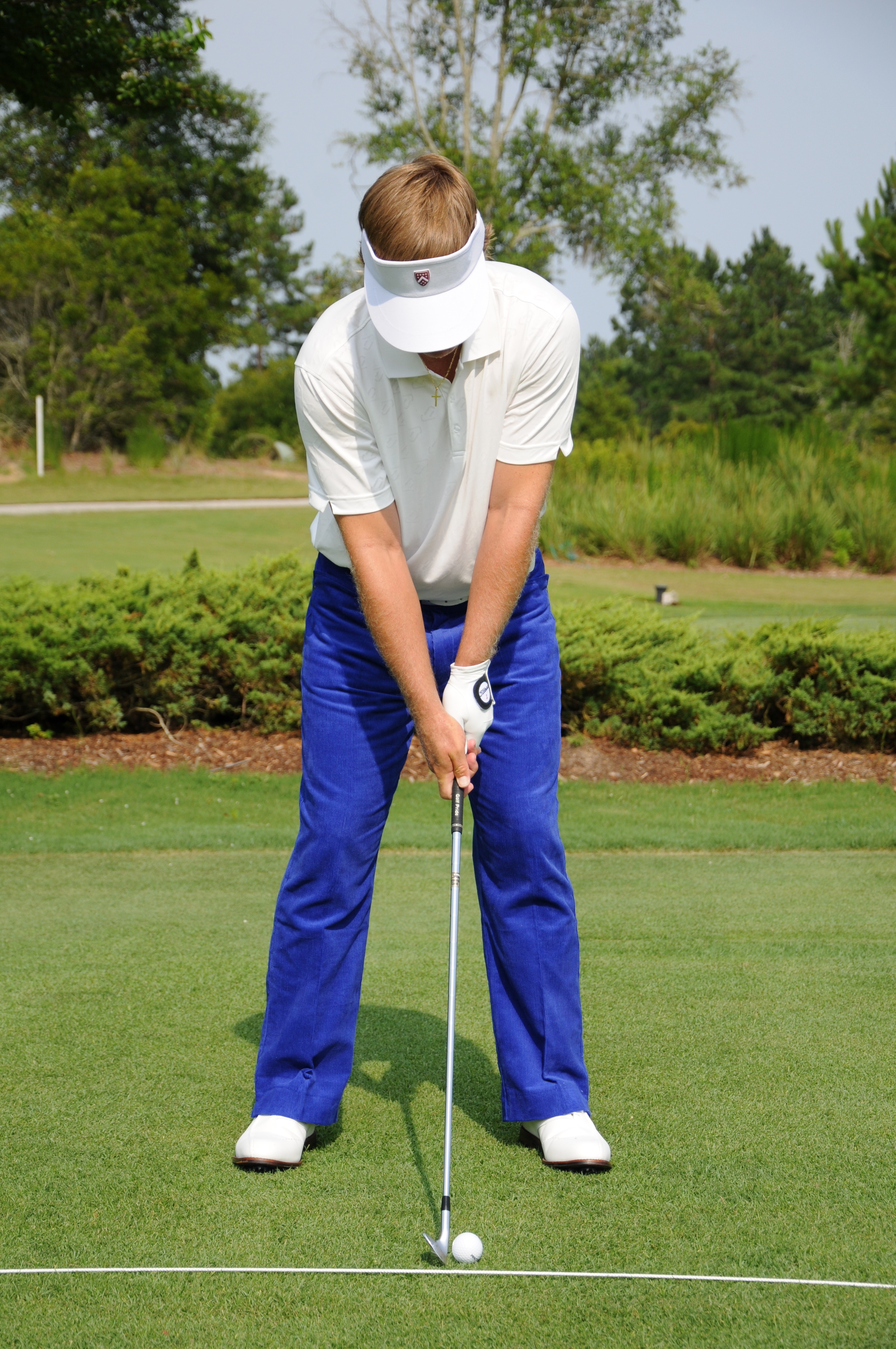
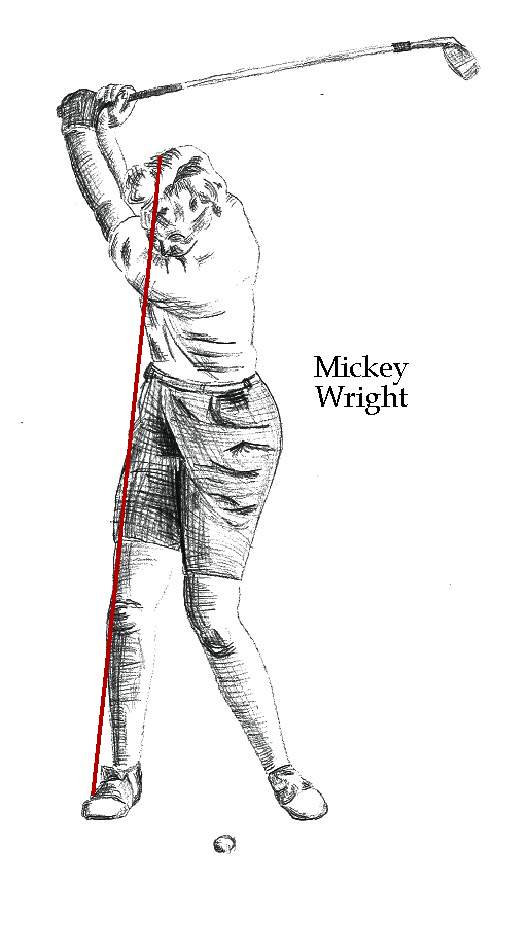 At address the head should not break the line. I noticed with golfers who had too much tilt at address this was quite prevalent and they all had a difficult time assuming the proper impact position once they had started poorly. Notice the picture below.
At address the head should not break the line. I noticed with golfers who had too much tilt at address this was quite prevalent and they all had a difficult time assuming the proper impact position once they had started poorly. Notice the picture below.